Digs & Discoveries
Off the Grid
By MARLEY BROWN
Tuesday, October 12, 2021
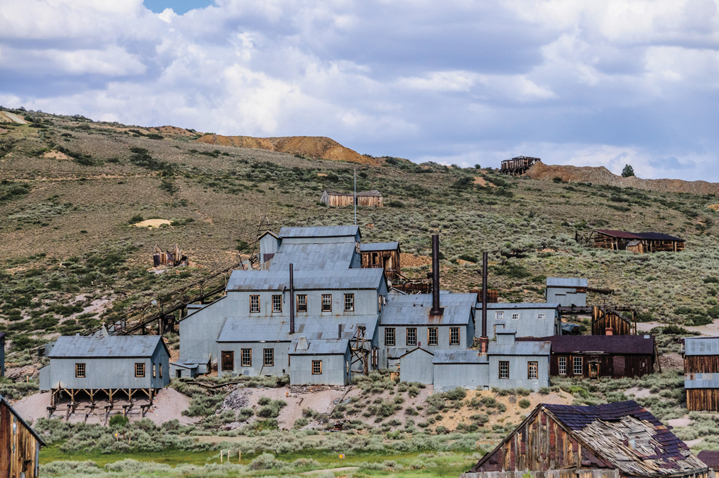 An archetypal Old West boomtown full of gunslinging outlaws and petticoat-clad women can still be reached by car about an hour’s drive from the eastern gate of Yosemite National Park near the California border with Nevada. In 1859, on the traditional homeland of the Northern Paiute people, a group of prospectors scanning the Eastern Sierra foothills for gold spotted some sparkling in a riverbed. They laid claim to land that would become Bodie, which grew into one of the most populous cities in California. Throughout the 1860s, relatively small-time gold mining operations took place in the area, but in the 1870s, Bodie’s Standard Mining Company made a rich strike of gold and silver, and the city’s population exploded. By 1879, Bodie had more than 8,000 residents and 2,000 buildings—at least 60 of them saloons.
An archetypal Old West boomtown full of gunslinging outlaws and petticoat-clad women can still be reached by car about an hour’s drive from the eastern gate of Yosemite National Park near the California border with Nevada. In 1859, on the traditional homeland of the Northern Paiute people, a group of prospectors scanning the Eastern Sierra foothills for gold spotted some sparkling in a riverbed. They laid claim to land that would become Bodie, which grew into one of the most populous cities in California. Throughout the 1860s, relatively small-time gold mining operations took place in the area, but in the 1870s, Bodie’s Standard Mining Company made a rich strike of gold and silver, and the city’s population exploded. By 1879, Bodie had more than 8,000 residents and 2,000 buildings—at least 60 of them saloons.
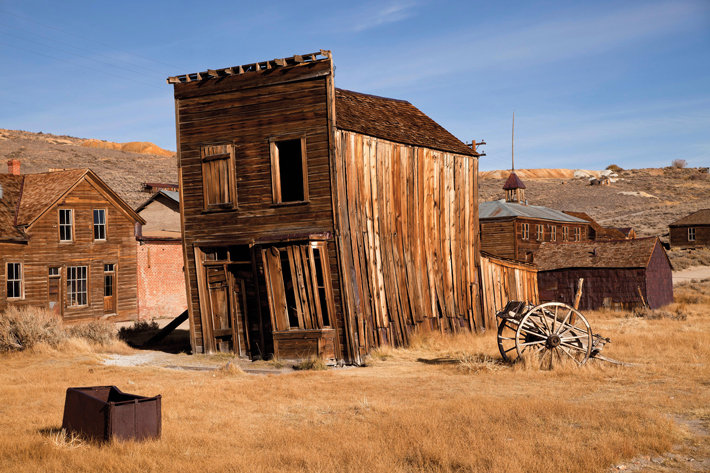 “Mining towns like Bodie are quite distinctive, because they became instant cities,” says archaeologist Paul White of the University of Nevada, Reno. “Pretty early on, you would have had saloons, churches, banks, general stores. What’s spectacular about Bodie is that even though just around five percent of the town’s structures remain, you don’t need much imagination to envision the whole town as it was.” Miners as well as shopkeepers, saloonkeepers, madams, grocers, and others hoping to earn a living in the boomtown came from a variety of ethnic and socioeconomic backgrounds. Bodie’s Chinese community, like that in many Old West towns, faced discrimination and segregation, but operated a number of successful businesses, including general stores, laundries, gambling dens, and markets.
“Mining towns like Bodie are quite distinctive, because they became instant cities,” says archaeologist Paul White of the University of Nevada, Reno. “Pretty early on, you would have had saloons, churches, banks, general stores. What’s spectacular about Bodie is that even though just around five percent of the town’s structures remain, you don’t need much imagination to envision the whole town as it was.” Miners as well as shopkeepers, saloonkeepers, madams, grocers, and others hoping to earn a living in the boomtown came from a variety of ethnic and socioeconomic backgrounds. Bodie’s Chinese community, like that in many Old West towns, faced discrimination and segregation, but operated a number of successful businesses, including general stores, laundries, gambling dens, and markets.
The boom times did not last long. Bodie’s mines were mostly depleted by the mid-1880s. Two devastating fires ravaged the town, one in 1892 and another in 1932. The last residents decamped in the 1940s, after which the ghost town was designated a state historic park and a national historic district.
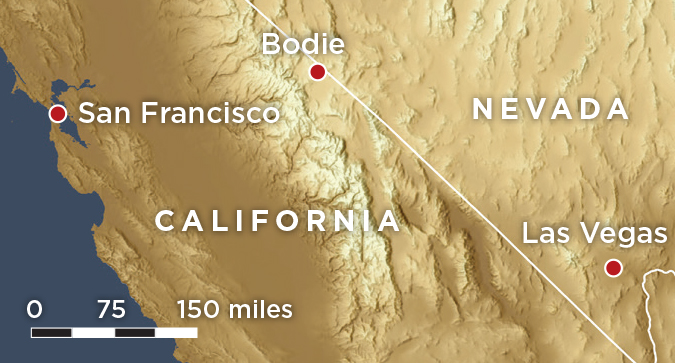 THE SITE
THE SITE
Bodie is open to visitors year-round, but the best time to come is in the summer months, when the park’s museum and visitor center are also open. Tours are offered through the museum and by the nonprofit Bodie Foundation, which also publishes a guide to all the town’s remaining buildings. White suggests taking a tour of the Standard Mining Company Stamp Mill, where raw ore was once crushed and precious metal extracted from the rock.
WHILE YOU'RE THERE
You don’t have to scale El Capitan to enjoy Yosemite. Rafting or floating down the Merced River is always a summertime favorite, as are horseback and mule rides. Information about these activities is available on the park’s website.
Mesopotamian War Memorial
By ERIC A. POWELL
Tuesday, October 12, 2021
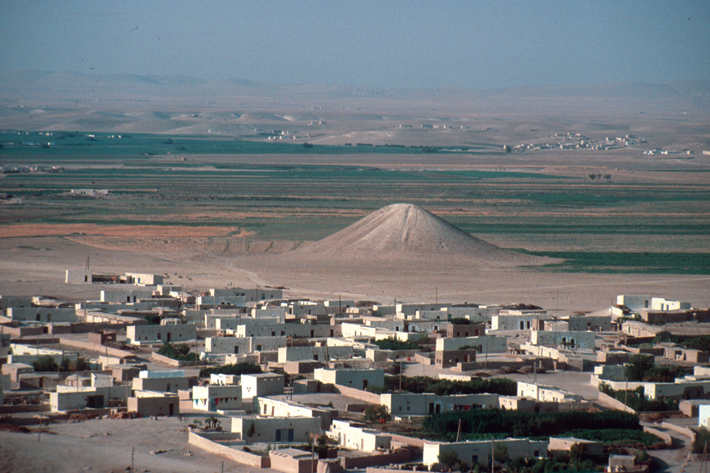 A mound in Syria now covered by a lake may have been a monument to the war dead of an ancient Mesopotamian settlement based at a site called Tell Banat. The six-story structure was built of lime-rich mud and gypsum that glistened in the sunlight. Known as the White Monument, it was excavated in the 1990s, before construction of a dam flooded it. University of Toronto archaeologist Anne Porter, who co-led those excavations, recently tasked her undergraduate students with revisiting the expedition’s copious notes. “The virtue of having some distance in time is that you aren’t locked into expectations of what the data might tell you,” says Porter.
A mound in Syria now covered by a lake may have been a monument to the war dead of an ancient Mesopotamian settlement based at a site called Tell Banat. The six-story structure was built of lime-rich mud and gypsum that glistened in the sunlight. Known as the White Monument, it was excavated in the 1990s, before construction of a dam flooded it. University of Toronto archaeologist Anne Porter, who co-led those excavations, recently tasked her undergraduate students with revisiting the expedition’s copious notes. “The virtue of having some distance in time is that you aren’t locked into expectations of what the data might tell you,” says Porter.
The students found that artifacts and human and animal burials recovered from the last stage of the White Monument’s construction, around 2450 B.C., were laid out in deliberate patterns. The remains of adults and teenagers who had originally been buried elsewhere were carefully arranged in the monument near deposits of clay pellets that were used in battle as sling projectiles. Some remains were buried near the skeletons of kunga, donkey-like animals that pulled war wagons in ancient Mesopotamia. Among the artifacts found at the monument were a clay figurine resembling a donkey and a model of a war wagon. “We now believe this was a memorial to members of a war party who served in a local conflict,” says Porter. The White Monument would have been visible to the people of Tell Banat and other settlements throughout the area, and may have embodied the story of a battle remembered for generations.
The Age of Glass
By JASON URBANUS
Tuesday, October 12, 2021
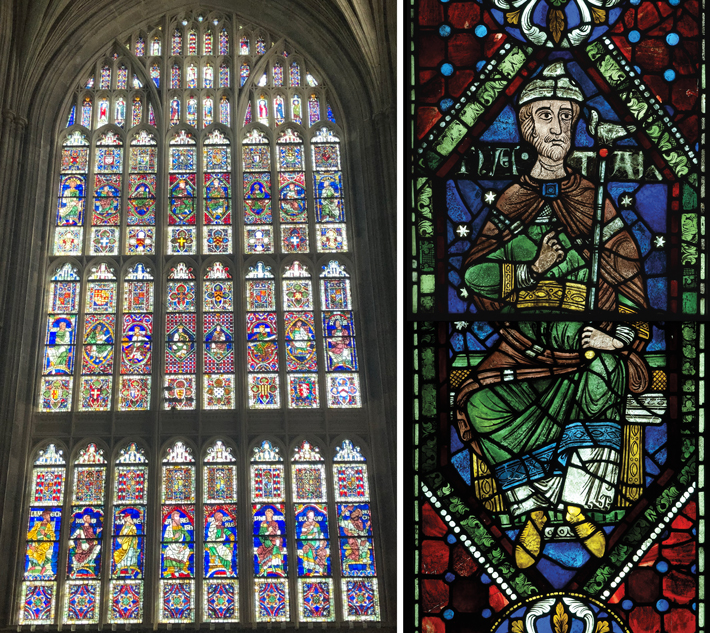 Among Canterbury Cathedral’s architectural wonders are its ornate, centuries-old stained glass windows. It is now clear that some of the windows are even older than originally thought. In the thirteenth century, 86 panels, each depicting an ancestor of Christ—known as the “ancestor series”—were installed along the cathedral’s clerestory as part of a major restoration after an 1174 fire. Experts noticed decades ago that four of those panels appeared to be of an earlier style. It is notoriously difficult to date stained glass since doing so normally requires the windows to be dismantled. Using a portable X-ray fluorescence machine equipped with a specially designed attachment, a team from University College London was finally able to date the glass panels by analyzing their chemical signatures. “This study was the first real test of this in situ methodology that we developed for medieval stained glass,” says archaeologist Laura Ware Adlington, “and the success we’ve experienced far exceeds our expectations.”
Among Canterbury Cathedral’s architectural wonders are its ornate, centuries-old stained glass windows. It is now clear that some of the windows are even older than originally thought. In the thirteenth century, 86 panels, each depicting an ancestor of Christ—known as the “ancestor series”—were installed along the cathedral’s clerestory as part of a major restoration after an 1174 fire. Experts noticed decades ago that four of those panels appeared to be of an earlier style. It is notoriously difficult to date stained glass since doing so normally requires the windows to be dismantled. Using a portable X-ray fluorescence machine equipped with a specially designed attachment, a team from University College London was finally able to date the glass panels by analyzing their chemical signatures. “This study was the first real test of this in situ methodology that we developed for medieval stained glass,” says archaeologist Laura Ware Adlington, “and the success we’ve experienced far exceeds our expectations.”
The team determined that the panel showing the prophet Nathan, and likely those showing three others, are significantly older than the rest. They date to the 1130s, and are among the oldest stained glass windows in the world. The researchers believe that these early glass panels were originally located in the cathedral’s choir and survived the fire. Almost a century later, they were incorporated into the ancestor series. “Of course, we can’t help but get excited by words like ‘oldest’ and ‘earliest,’ but it is more than that,” says Adlington. “In this case, the windows are survivors of a fire, relics of a former cathedral that is no longer there, but which has left clues behind about its appearance.”
China's New Human Species
By ZACH ZORICH
Tuesday, October 12, 2021
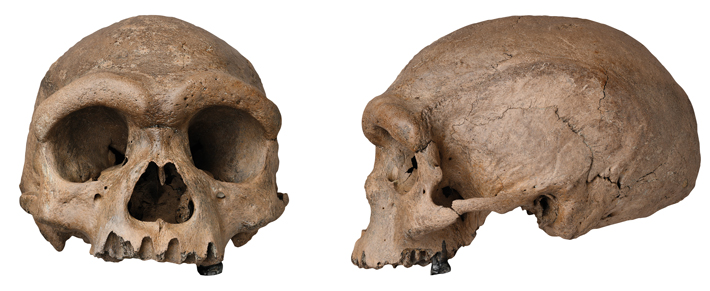 During the Japanese occupation of China in 1933, a man working on a bridge in the city of Harbin in the northeastern part of the country discovered a skull and immediately hid it from his Japanese overseers. In 2018, the elderly man revealed his secret to his grandchildren, who recovered the skull from the abandoned well where the man had concealed it 85 years earlier. They turned the skull over to scientists at the Geoscience Museum of Hebei GEO University. The researchers determined that the skull is at least 146,000 years old by using uranium series dating, which examines trace amounts of uranium and thorium in bone. Since uranium decays to thorium at a known rate, they were able to calculate the skull’s age from the ratio of the two elements. The skull has a unique mixture of traits associated with Homo erectus, such as a massive brow ridge and low forehead, and traits that appear only in more recent hominins, such as a relatively small face and large brain. The skull could possibly represent a previously unknown human lineage, says Chris Stringer of London’s Natural History Museum. Stringer’s colleagues have named the species Homo longi.
During the Japanese occupation of China in 1933, a man working on a bridge in the city of Harbin in the northeastern part of the country discovered a skull and immediately hid it from his Japanese overseers. In 2018, the elderly man revealed his secret to his grandchildren, who recovered the skull from the abandoned well where the man had concealed it 85 years earlier. They turned the skull over to scientists at the Geoscience Museum of Hebei GEO University. The researchers determined that the skull is at least 146,000 years old by using uranium series dating, which examines trace amounts of uranium and thorium in bone. Since uranium decays to thorium at a known rate, they were able to calculate the skull’s age from the ratio of the two elements. The skull has a unique mixture of traits associated with Homo erectus, such as a massive brow ridge and low forehead, and traits that appear only in more recent hominins, such as a relatively small face and large brain. The skull could possibly represent a previously unknown human lineage, says Chris Stringer of London’s Natural History Museum. Stringer’s colleagues have named the species Homo longi.
According to Stringer, it is also possible that the Harbin specimen may belong to the same species as the Denisovans, a lineage closely related to Neanderthals that is only known from a few small bones and a complete DNA sequence. In order to test this possibility, DNA would have to be recovered from the Harbin skull. Stringer points out that another fragmentary fossil skull, found at the site of Xuchang in central China, may represent yet another separate hominin lineage dating to about 100,000 years ago. If that it is the case, there may have been at least four different lineages of early humans in China at that time—Neanderthals, Homo sapiens, Homo longi, and the Xuchang hominin. “You’ve got all these different experiments in how to be human,” says Stringer, “and Harbin adds one more.”
Salty Snack
By BENJAMIN LEONARD
Tuesday, October 12, 2021

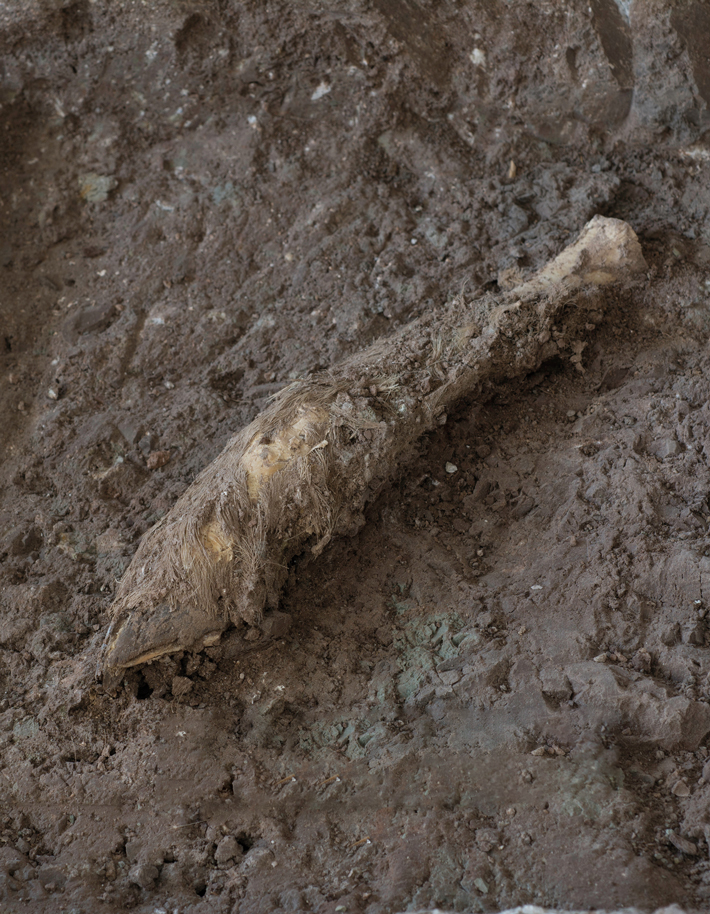 Beginning sometime between the sixth and fourth centuries B.C. and continuing up until the late twentieth century A.D., members of rural communities sporadically worked the Chehrabad salt mine in northwestern Iran. Since 1993, archaeologists have uncovered the remains of eight ancient miners whose bodies were mummified by the mine’s salt-rich and low-moisture environment, along with mummified animal remains, including a sheep’s leg that was discarded some 1,600 years ago. “The mine’s extremely dry conditions quickly desiccated the sheep’s soft tissue,” says Trinity College Dublin geneticist Conor Rossi. “Its DNA was extremely well preserved.”
Beginning sometime between the sixth and fourth centuries B.C. and continuing up until the late twentieth century A.D., members of rural communities sporadically worked the Chehrabad salt mine in northwestern Iran. Since 1993, archaeologists have uncovered the remains of eight ancient miners whose bodies were mummified by the mine’s salt-rich and low-moisture environment, along with mummified animal remains, including a sheep’s leg that was discarded some 1,600 years ago. “The mine’s extremely dry conditions quickly desiccated the sheep’s soft tissue,” says Trinity College Dublin geneticist Conor Rossi. “Its DNA was extremely well preserved.”
Examining the sheep’s DNA has allowed Rossi and his colleagues to envision what the animal looked like. The scientists identified a gene associated with a fat tail, a characteristic still present in sheep raised for their meat in the area today. They also determined that the sheep did not have the genetic mutation associated with woolly fleece, which was an important commodity starting in the mid-to late fourth millennium B.C. Scanning electron microscopy of hair fibers preserved on the animal’s leg confirmed that this particular sheep likely had a hairy rather than a woolly coat. Given these traits, the researchers believe ancient miners consumed the sheep for its meat. Says Rossi, “This sample builds up a bigger story about how ancient people used specialized breeds of animals in thoughtful ways.”
Advertisement
Advertisement
IN THIS ISSUE
Features
When Isis Was Queen
Italian Master Builders
Ghost Tracks of White Sands
Piecing Together Maya Creation Stories
Gaul's University Town
Letter from Ghana
Digs & Discoveries
Identifying the Unidentified
In Full Color
Typing Time
Otto's Church
An Irish Idol
A Family's Final Resting Place
A Place of Their Own
A Trip to Venice
Salty Snack
The Age of Glass
China's New Human Species
Mesopotamian War Memorial
Off the Grid
Around the World
Under the Temple of the Feathered Serpent, Ice Age camping in Michigan, and a Mesolithic Russian amber merchant
Artifact
Lost in translation
Advertisement

Recent Issues
-
 May/June 2024
May/June 2024
-
 March/April 2024
March/April 2024
-
 January/February 2024
January/February 2024
-
 November/December 2023
November/December 2023
-
 September/October 2023
September/October 2023
-
 July/August 2023
July/August 2023
-
 May/June 2023
May/June 2023
-
 March/April 2023
March/April 2023
-
 January/February 2023
January/February 2023
-
 November/December 2022
November/December 2022
-
 September/October 2022
September/October 2022
-
 July/August 2022
July/August 2022
-
 May/June 2022
May/June 2022
-
 March/April 2022
March/April 2022
-
 January/February 2022
January/February 2022
-
 November/December 2021
November/December 2021
-
 September/October 2021
September/October 2021
-
 July/August 2021
July/August 2021
-
 May/June 2021
May/June 2021
-
 March/April 2021
March/April 2021
-
 January/February 2021
January/February 2021
-
 November/December 2020
November/December 2020
-
 September/October 2020
September/October 2020
-
 July/August 2020
July/August 2020
-
 May/June 2020
May/June 2020
-
 March/April 2020
March/April 2020
-
 January/February 2020
January/February 2020
-
 November/December 2019
November/December 2019
-
 September/October 2019
September/October 2019
-
 July/August 2019
July/August 2019
-
 May/June 2019
May/June 2019
-
 March/April 2019
March/April 2019
-
 January/February 2019
January/February 2019
-
 November/December 2018
November/December 2018
-
 September/October 2018
September/October 2018
-
 July/August 2018
July/August 2018
-
 May/June 2018
May/June 2018
-
 March/April 2018
March/April 2018
-
 January/February 2018
January/February 2018
-
 November/December 2017
November/December 2017
-
 September/October 2017
September/October 2017
-
 July/August 2017
July/August 2017
-
 May/June 2017
May/June 2017
-
 March/April 2017
March/April 2017
-
 January/February 2017
January/February 2017
-
 November/December 2016
November/December 2016
-
 September/October 2016
September/October 2016
-
 July/August 2016
July/August 2016
-
 May/June 2016
May/June 2016
-
 March/April 2016
March/April 2016
-
 January/February 2016
January/February 2016
-
 November/December 2015
November/December 2015
-
 September/October 2015
September/October 2015
-
 July/August 2015
July/August 2015
-
 May/June 2015
May/June 2015
-
 March/April 2015
March/April 2015
-
 January/February 2015
January/February 2015
-
 November/December 2014
November/December 2014
-
 September/October 2014
September/October 2014
-
 July/August 2014
July/August 2014
-
 May/June 2014
May/June 2014
-
 March/April 2014
March/April 2014
-
 January/February 2014
January/February 2014
-
 November/December 2013
November/December 2013
-
 September/October 2013
September/October 2013
-
 July/August 2013
July/August 2013
-
 May/June 2013
May/June 2013
-
 March/April 2013
March/April 2013
-
 January/February 2013
January/February 2013
-
 November/December 2012
November/December 2012
-
 September/October 2012
September/October 2012
-
 July/August 2012
July/August 2012
-
 May/June 2012
May/June 2012
-
 March/April 2012
March/April 2012
-
 January/February 2012
January/February 2012
-
 November/December 2011
November/December 2011
-
 September/October 2011
September/October 2011
-
 July/August 2011
July/August 2011
-
 May/June 2011
May/June 2011
-
 March/April 2011
March/April 2011
-
 January/February 2011
January/February 2011
Advertisement






